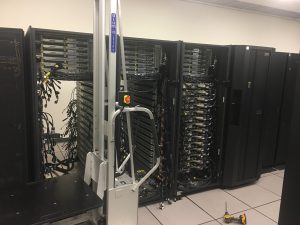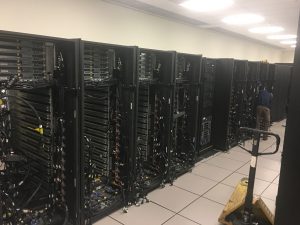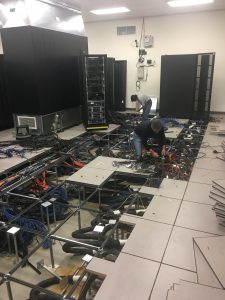Road to Niagara 1: Tightly Coupled Cluster Decommissioned
October 25, 2017 in frontpage, news, Road_to_Niagara

This is the first of a series of posts on the transition to SciNet’s new supercomputer called “Niagara”, which will replace our aging General Purpose Cluster (GPC) and Tightly Coupled Cluster (TCS). The transition to Niagara will take place in the fall of 2017, and the system is planned to be available to users in early 2018.
To make room for Niagara, old systems will have to go. Because enabling research computing is our priority, throughout the process of installting Niagara, at least 50% of the GPC will be kept running. The GPC will not be completely switched off until Niagara is available.
The first cluster to go was the TCS. This was SciNet’s first supercomputer, a 102-node, 3264-core, IBM Power 6 system installed in January of 2009.
The TCS was shut off on September 29, 2017, and physically removed in October. The end of an era.
As the pictures below show, you don’t just put your old supercomputer to the curb, there is a bit of work involved in removing it. It took about 8 hours, 14 pallets, 10 racks, and 3 truck loads. And a $5 bill was found under one of the TCS racks, so we made some money as well!
Currently we are in mids of finalizing the contract for Niagara, so the next post in this series will provided more details on the new system to come.





